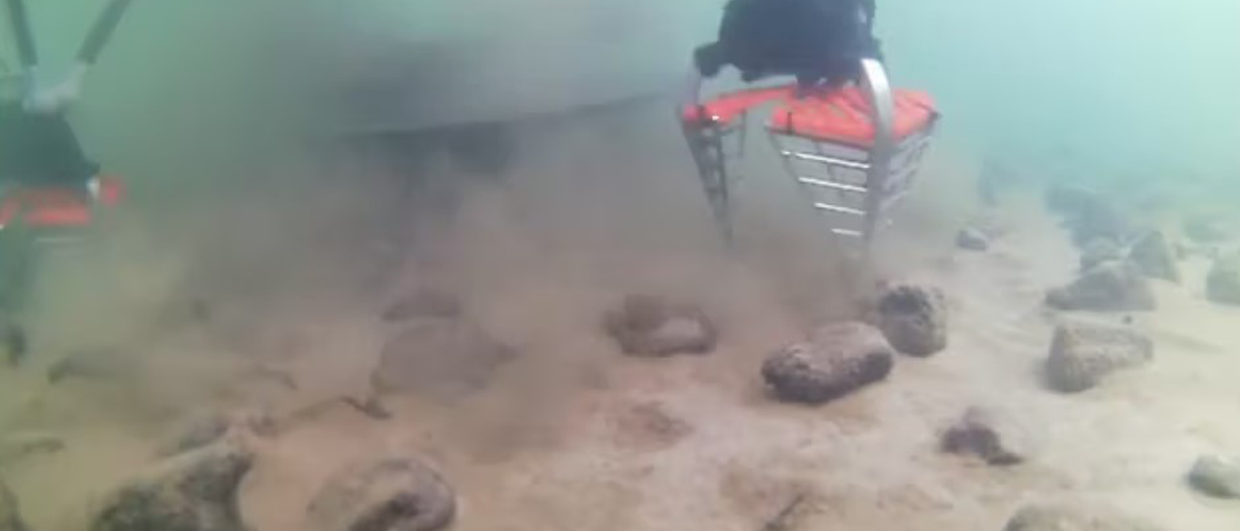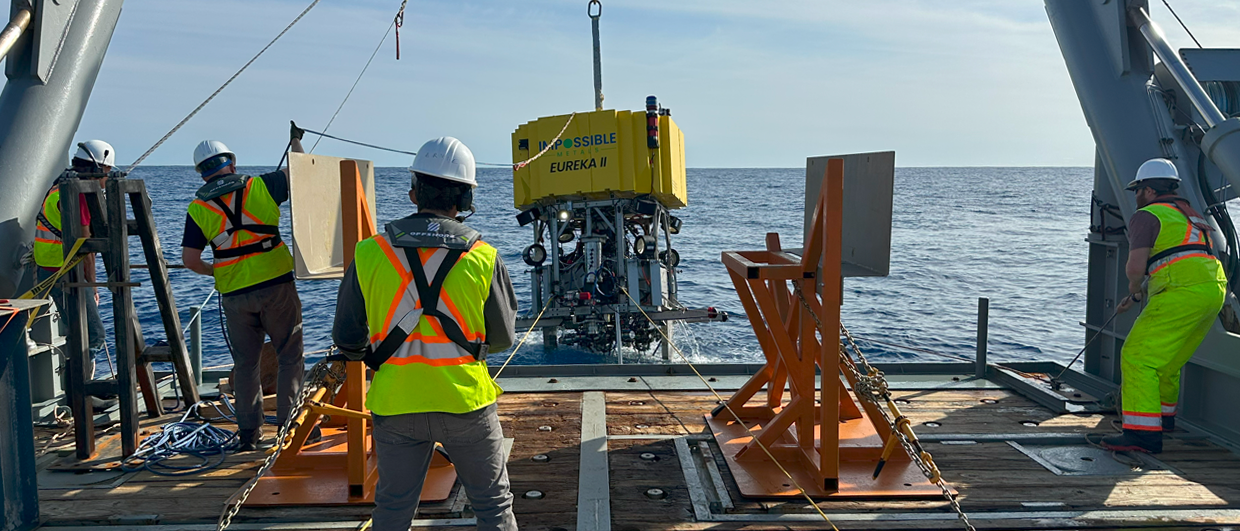They are known as polymetallic nodules, manganese nodules or simply manganese tubers. The names give you an idea of the shape and metal content.
Manganese modules were first found during the British Challenger expedition in the years 1872-1876, but it would be a few hundred years before humans realised that they were not only a natural curiosity, but also a potential source of raw materials.
We find the nodules among the sediments on the abyssal plains (usually 3000 – 6000 meters of depth). They come in many shapes and sizes but can perhaps best be compared to potatoes in a field.
The tubers consist of metals that have circulated in the ocean and that originate from erosion of continents or from hydrothermal chimneys in the deep sea.
The nodules are formed mainly in two ways; either hydrogenetically or diagenetically.
Hydrogenetic formation occurs when dissolved metal ions in the seawater attach to a nucleus. In this case, the nodules grow on the seabed.
Nodules can also grow among the sediments under the seabed, and it is then metal ions in pore water that accumulate around and core. This is called diagenetic formation.
Manganese nodules can also form partly hydrogenetically and partly diagenetically. This often gives asymmetrical shapes, as the nodules grow fastest at the bottom.
The process, regardless of whether it takes place on or under the seabed, is very slow. Nodules on the seabed grow by about 10 millimetres per million years. Under the seabed, the growth is between 10 and 100 millimetres per million years.
It therefore needs very stable conditions to form large tubers. Which you find on the abyssal plains.
As indicated by the name, the nodules contain a significant proportion of manganese. Manganese is an important additive in steel and iron production, and is also used in aluminium alloys.
The nodules also contain nickel, copper and cobalt, metals that will be in particular demand in the green shift to produce, among other things, batteries.
Expronews.com: Plenty of “rock batteries” on the ocean floor
Analysis of nodules taken from the Clarion-Clipperton Zone (CCZ, the largest manganese nodule field in the world) in the Pacific Ocean between the west coast of Mexico and Hawaii, resulted in the following grades. Manganese: 28.4%; Iron: 6.2%; Nickel: 1.3%; Copper: 1.0% and Cobalt: 0.2%.

Exploration and extraction
Manganese nodule deposits are not known in Norwegian waters. Besides CCZ, major well-known economically interesting sea regions are the Peru Basin west of Peru, the Penrhyn Basin off the Cook Islands east of Australia and the Indian Ocean.
However, large parts of the world’s oceans have not been adequately explored. It is estimated that 38 million square kilometers may have good conditions for nodule formation. This corresponds to about nine times the area of the EU countries.
For several of the required metals, it is believed that most are found in the ocean. According to the USGS, this applies to nickel, manganese, molybdenum and especially cobalt, where it is estimated that as much as 96 percent of the remaining resources are found below the sea surface.
A conservative estimate is that CCZ may contain 6 billion tonnes of manganese, 270 million tonnes of nickel, 230 million tonnes of copper and 44 million tonnes of cobalt. The amount of copper in CCZ may correspond to one third of all known resources on land.
Anthony O’Sullivan (The Metals Company, TMC) will give a presentation on exploration and development in the Clarion-Clipperton Zone in the Pacific Ocean during the NCS Exploration – Deep Sea Minerals Conference on October 20 and 21.
O’Sullivan will explain how nodule mining may be environmentally responsible compared to mining on land. Deep sea mining compares favorable when it comes to CO2 emissions, water and land use, biomass at risk, as well and social costs such as human lives at risk and child labour risk.
TMC plans to complete prefeasibility and environmental impact assessment studies by 2023. Environmental baseline study programs are already in progress.
Expronews.com: Deep Sea Exploitation is Around the Corner
The Clarion-Clipperton Zone is thus an enormous resource for metals. It is estimated that a mining company operating in CCZ will have to extract two to three million tonnes of manganese modules per year for it to be economical. This corresponds to an annual area of 200 – 300 square kilometers (Oslo covers an area of 270 km2).
However, the number of operators that can operate on CCZ’s resources is limited. As the nodules primarily consist of manganese, the market will saturate quickly and prices will fall.
Extraction of raw materials from the deep sea poses technical and logistical challenges. So far, most of the possible technologies and methods exist only on the drawing board as concepts. However, some equipment and some systems have been developed.
Nodules are relatively easy to extract as they are loose rocks lying on or in the sediments on the seabed.
The first technologies for obtaining nodules were developed as early as the 1970s. In short, the concept is that machines run on the seabed and collect the nodules. They are then pumped up to a production ship via a pipe.
On the production ship, the nodules are separated from sediments and water, which are sent back down to the seabed.
Today’s existing collection machines are smaller than what will be needed in the future if the nodules are to be extracted economically.
Main source for this article: GEOMAR Helmholtz Centre for Ocean Research.





